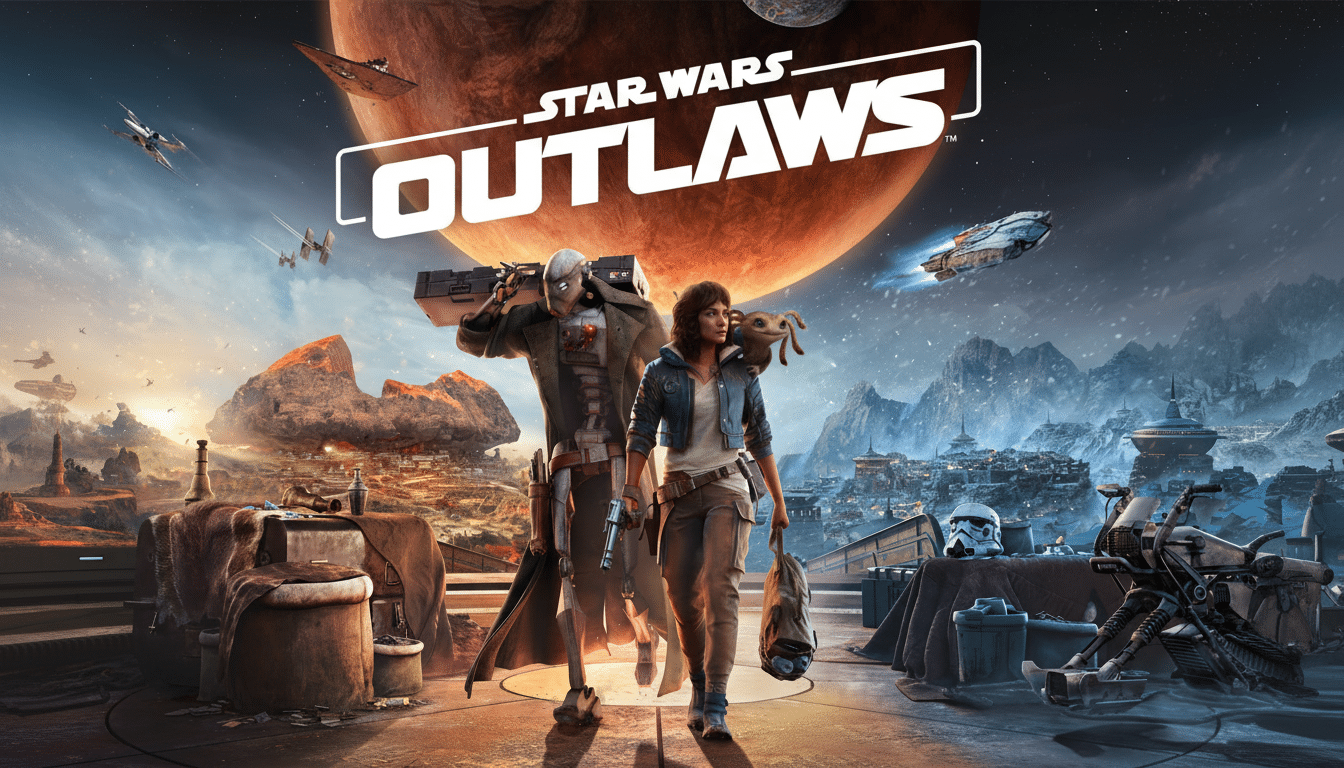The most hotly argued quirks of Nintendo’s latest hardware — the game key card format — actually turned out to solve a genuine performance issue for Switch 2 Star Wars: Outlaws.
Staff from Ubisoft told me that the team’s open-world tech simply ran better when the game was installed to internal storage through a key card rather than read directly off a traditional cartridge.

Game key cards are physical cards containing a digital download code that are used to purchase software instead of transferring discs. Preservationists hate the approach, collectors wince at “empty” carts, and players fret over long-term access if servers are taken down. But in this case, the polarizing format was also the technical half of a compromise.
Why It’s Faster
Outlaws runs on Ubisoft’s Snowdrop engine, which relies on heavy data streaming to feed vast environments and dense detail in as you move. For that model to work, storage has to regularly and quickly deliver assets with predictability; no hitching, no pop-in, no long traversal stutters.
“We were working with the Switch 2 game cards and we found that the traditional ones have a reduced sustained throughput and latency profile that we needed to hit our quality target,” Ubisoft developer Rob Bantin told Tech Radar. Loading the game into internal flash via a key card lifted that bottleneck, delivering Snowdrop a more consistent pipe of I/O. “The motivations were not costs, they were performance,” he added.
That argument lines up with how Snowdrop has been applied to other sprawling Ubisoft titles, where streaming systems are tasked with pulling in geometry, textures, and effects on the fly. In practice, reading data from internal storage can result in higher bandwidth and shorter seek times than reading complex data from an external card, and image stability at high movement (whether traversal or combat) speeds is easier to maintain.
Lumia analysts support the move
Early tech breakdowns have also lauded the Switch 2 port. The experts at Digital Foundry called it an unusually robust port, with picture quality generally comparable to that of the Xbox Series S and ray-traced effects included — features that might generally be described as ambitious for a Nintendo machine. The bottom line: in high-density streaming environments, the storage road you take matters.

The result says something beyond plain downscale. It speaks to finely tuned I/O, memory and asset management and a strategy made specifically for the strengths of the console when the game is ran from internal storage. If those basics are correct, features like ray tracing should be able to limp through the port without completely tanking stability, settings and resolution notwithstanding.
Preservation concerns endure — but with nuance
None of this addresses the long-running issues surrounding key cards. The Video Game History Foundation and others have sounded the alarm about server-dependent releases putting the future accessibility of games in doubt as well as making preservation more complicated. With physical buyers also losing out on some of the permanence that a data-filled cartridge can offer.
Still, Outlaws highlights a trade-off that might be inherent in large ports of scale. If that means an engine streaming a game into memory with cartridge I/O, and the key card is an efficient, practical way to deliver it while maintaining performance, then so be it, even if collectors don’t like it. Bantin’s observation that cost didn’t figure significantly in the decision adds to the case against the claim that this was strictly a budget maneuver.
What this portends for Switch 2 ports to come
Whether other open-world games, particularly those that hinge on heavy streaming, gravitate toward key cards to leverage internal storage performance remains to be seen, but if Outlaws is any indication, it now seems possible.
Publishers will balance gains to frame pacing, texture loading, and traversal smoothness with concerns about download size, storage footprint, and offline access.
For players, the bottom line is simple: Switch 2 Star Wars: Outlaws is better you installed it to the console, not worse.
The controversial format did more than help save shelf space — it led the way for a port that looks and runs significantly better than skeptics dare anticipated. Clear labeling and direct developer communication, such as Bantin’s, will be essential in the coming months as multiple studios decide if the same trade is worth it for their games.

